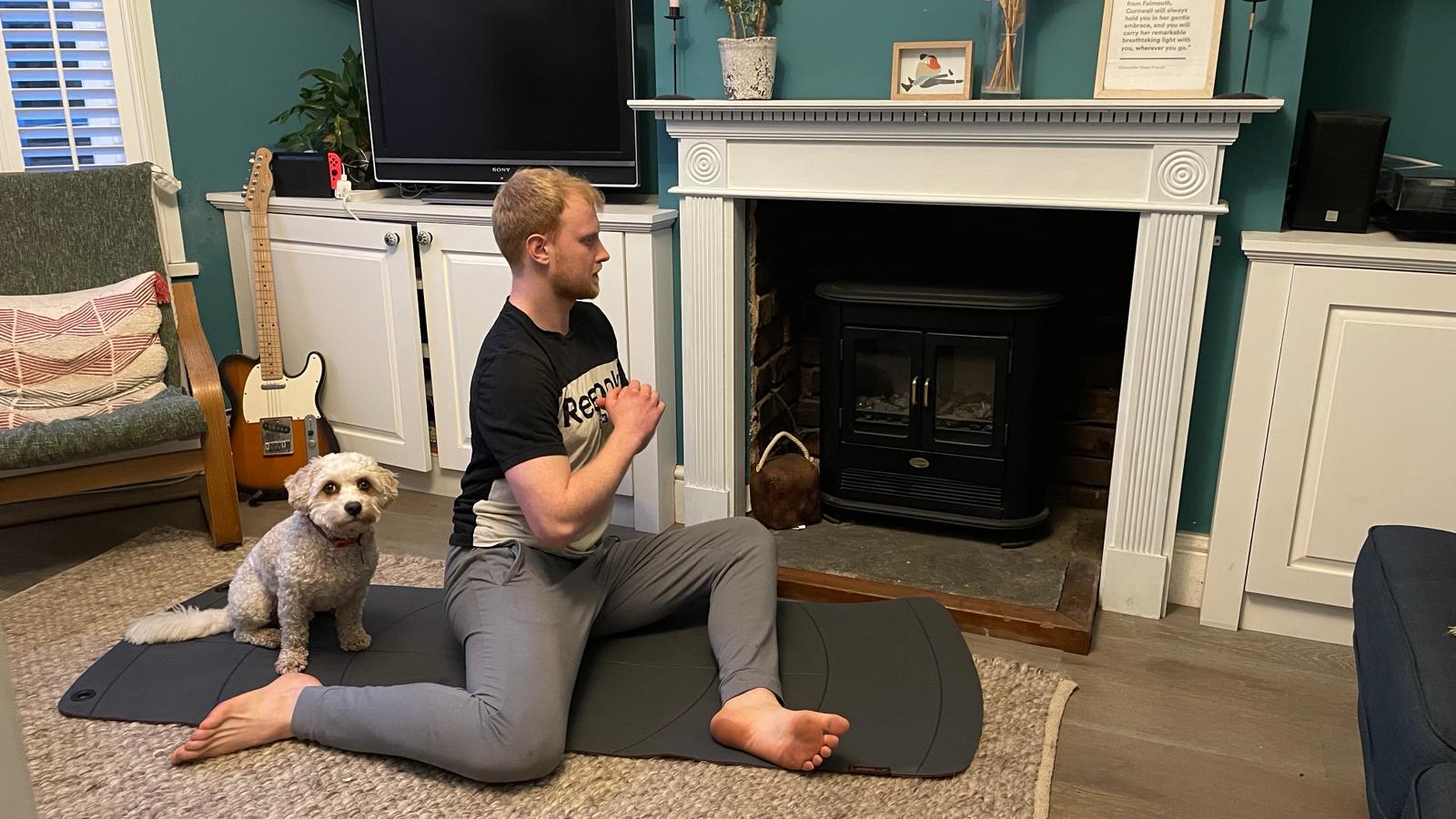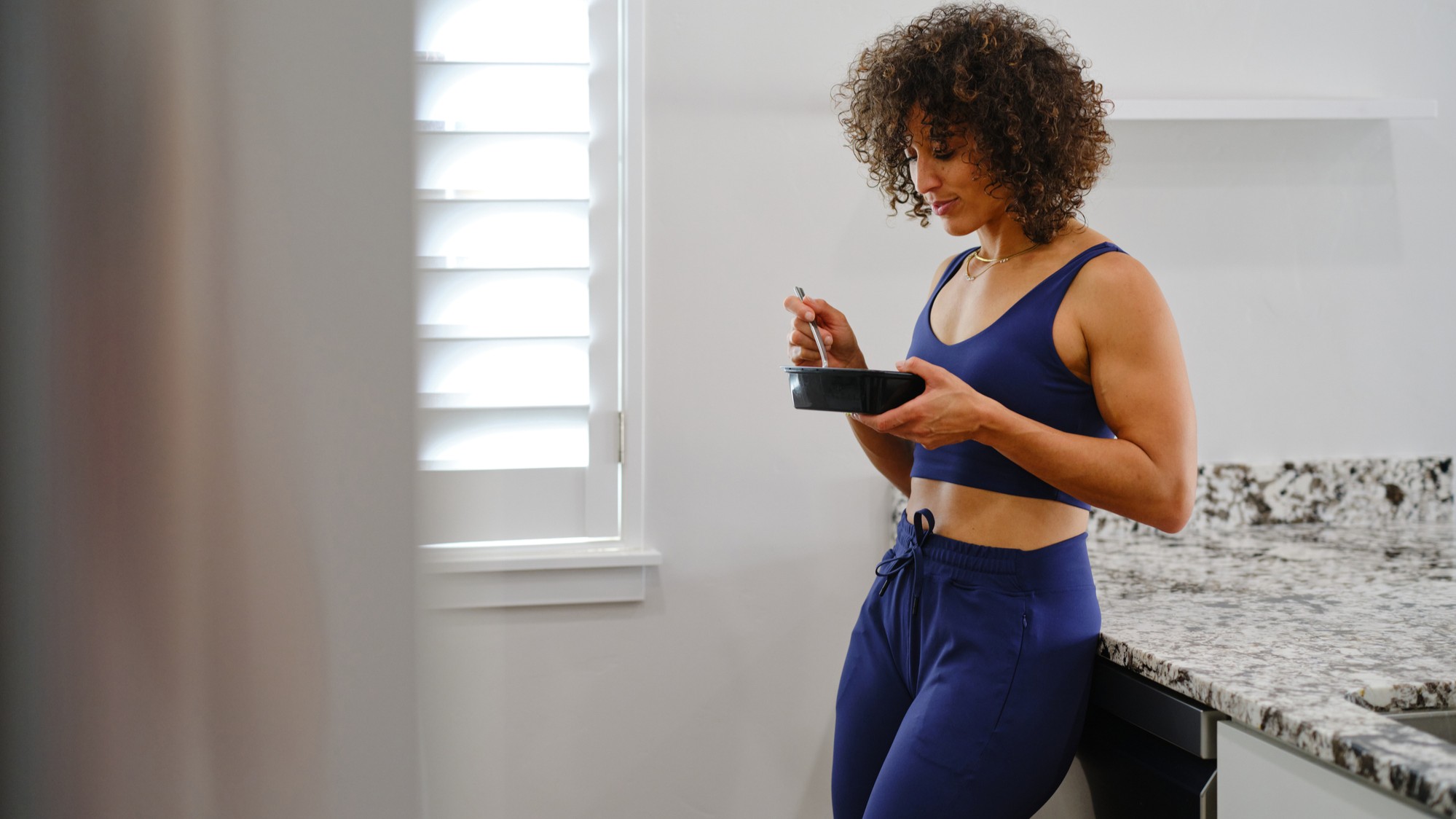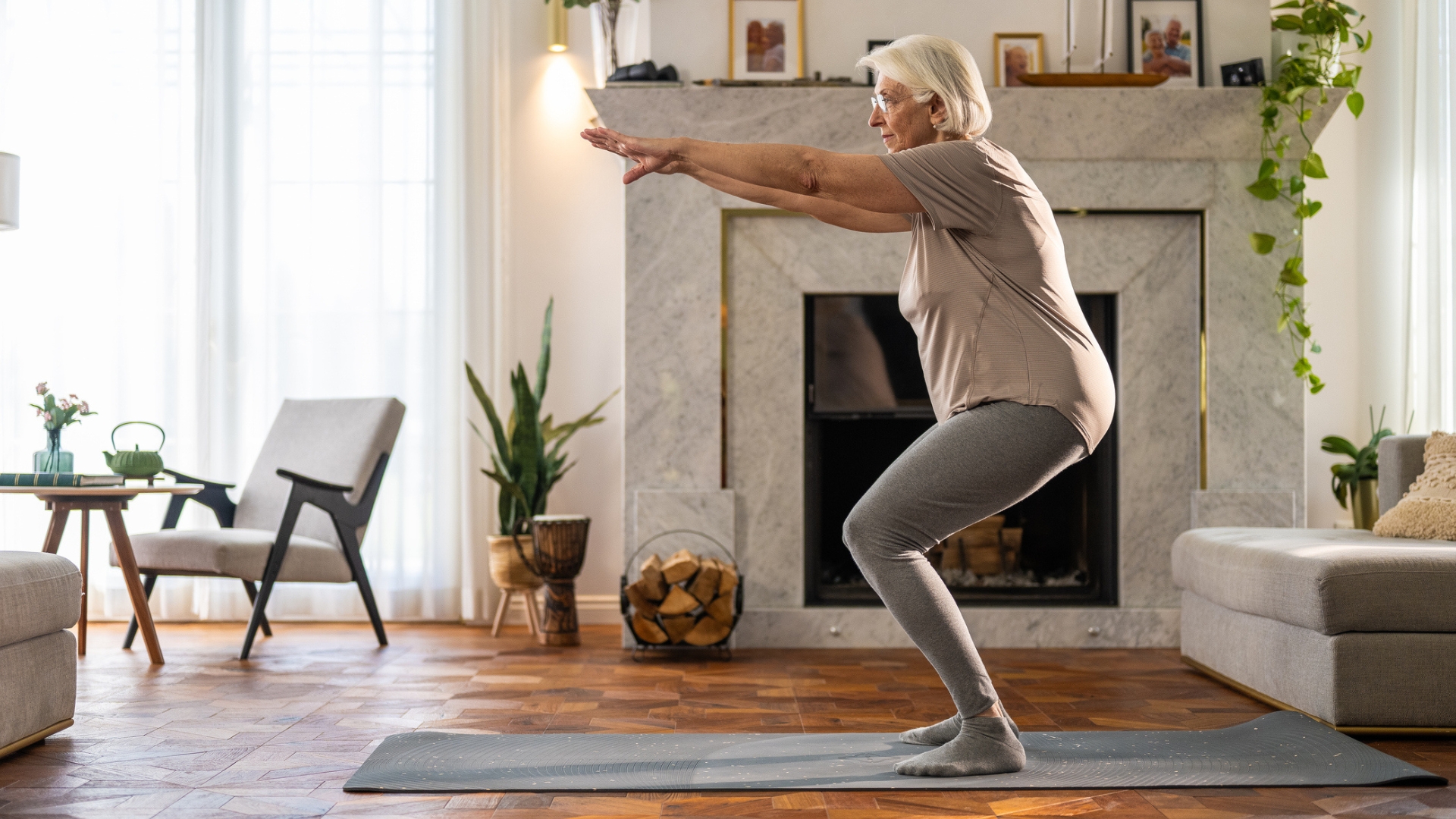I did the 90/90 hip mobility stretch every day for two weeks—here are four things I learned
I was surprised at what this one move did for my stiff hips and mobility


Even though I have a relatively active lifestyle, I still spend a lot of my day sitting down, which is one of the main reasons people develop tight hips.
Recently I noticed my hips feeling stiff while squatting, so I set out to find a quick, accessible stretch that could help and I soon struck gold.
I landed on the 90/90 hip stretch, which involves sitting on the floor with one leg in front of you, one leg behind you and both knees bent at 90° (hence the name).
Keen to find out more, I asked physical therapist, NCPT and Balanced Body educator Lindy Royer to talk me through the move’s benefits, then I committed to doing it every day for a fortnight in a quest for more mobile hips. Here are my results.
How to do the 90/90 hip mobility stretch
- Sit upright with your left leg bent in front of you. The outer side of your left thigh and calf should be resting on the ground and your knee should be bent at 90°.
- Bring your right leg out to the side so your right thigh and left calf are parallel. Your right knee should also be bent at 90°. Hold this position for a few seconds.
- Keeping your feet on the floor, move your knees up and over to the other side so they’re resting on the floor, rotating your torso as you move. You should now be mirroring your starting position on the other side of your body.
What I learned doing the 90/90 stretch every day for two weeks
I used the 90/90 stretch in two different ways. To warm up for my gym sessions, I treated it as a dynamic hip-loosening move by working through a higher number of repetitions, between 10 and 20.
I also used it as a static stretch at home when I was feeling a bit stiff from working at my desk. I would do a few repetitions but hold the position for 30 seconds on each side.
From the get-go the move highlighted just how tight my hips were. I struggled to keep them square as I faced my front knee, particularly on my left side, and found it difficult to keep my torso upright when twisting unless I planted my hands on the floor for support.
Get the Fit&Well Newsletter
Start your week with achievable workout ideas, health tips and wellbeing advice in your inbox.
Royer says this move is a good test of hip mobility. The gold standard is to be able to do it comfortably with an upright trunk and no need for extra hand support. And on this evidence, I definitely didn’t pass at first.
However, after doing the move daily for two weeks, I began to see improvements. I was eventually able to move from side to side without placing my hands on the floor, and I could keep my torso more upright. I also noticed that that in the gym, the discomfort I’d been feeling at the bottom of my squats started to subside.
While I’m buoyed by these improvements, there’s still work to be done on my hip health, so I’m not stopping there.
“Two weeks of daily execution of hip 90/90s may not be enough to get you to the end goal position, but you will notice improvement in your mobility and feel the difference in your movement,” says Royer.
“With consistency, over time, the hips will continue to open, resulting in better function, movement ability and quality of life.”
Who can benefit from the 90/90 stretch?
Royer recommends this exercise for other people who, like me, spend large chunks of their day in the same position.
“If you sit or stand for hours at a time, or do the same activity repetitively without putting your hips in a variety of positions, you are more likely to lose mobility over time,” she explains.
“This can lead to other structures like the lower back becoming tight or painful. Hip 90/90s are very beneficial for keeping the full mobility of your hips and are an efficient way to counteract the effects of prolonged sitting or inactivity.”
Who shouldn’t do the hip 90/90 stretch?
While this is a great stretch that can help many people ease their tight hips, Royer cautions that it’s not suitable for everyone.
“Hip 90/90s should be avoided if you experience back pain or lower extremity pain with the exercise. It is also not recommended for people who have had hip or knee replacements, so check with your surgeon before giving it a try.
“In all of these cases, I recommend seeking an experienced physical therapist or other rehab professional who can evaluate you and advise you on modifications and precautions,” says Royer.
How to use the 90/90 stretch
If improving your hip mobility is the goal, and you don’t have any of the limitations listed above, Royer recommends practicing this stretch daily.
Once you can sit comfortably in the 90/90 position with the trunk erect, you can taper this daily practice back to three or four times per week.
Again, there are some exceptions to this advice.
“If you feel significant muscle soreness with daily practice, I recommend taking one or two days off before resuming. The 90/90 position is a challenge for many, and it’s best to do it after some warm up activity, or towards the end of your workout.”

Harry Bullmore is a Fitness Writer for Fit&Well and its sister site Coach, covering accessible home workouts, strength training session, and yoga routines. He joined the team from Hearst, where he reviewed products for Men's Health, Women's Health, and Runner's World. He is passionate about the physical and mental benefits of exercise, and splits his time between weightlifting, CrossFit, and gymnastics, which he does to build strength, boost his wellbeing, and have fun.
Harry is a NCTJ-qualified journalist, and has written for Vice, Learning Disability Today, and The Argus, where he was a crime, politics, and sports reporter for several UK regional and national newspapers.
-
 Put down the protein shake—this high-protein chicken and rice recipe is a better way to refuel after a workout
Put down the protein shake—this high-protein chicken and rice recipe is a better way to refuel after a workoutAnd it only takes 10 minutes to make
By Lou Mudge
-
 The three Pilates exercises every beginner should start with, according to an expert instructor
The three Pilates exercises every beginner should start with, according to an expert instructorA sequence that will take you no more than 10 minutes
By Alice Porter